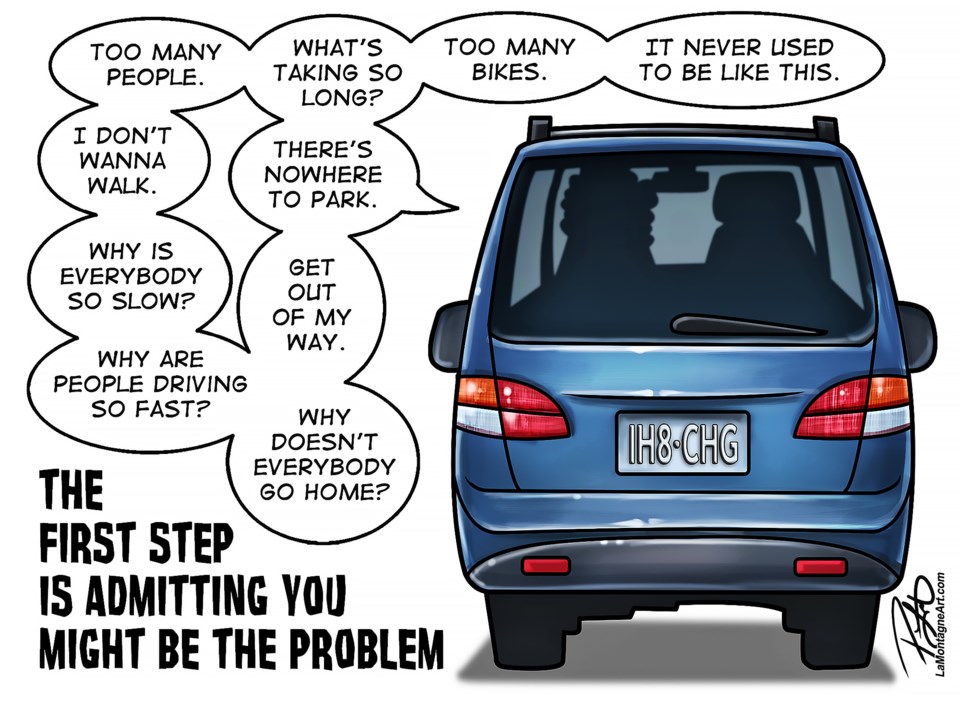The ongoing transition or evening of the playing field between vehicles, cycling, pedestrians and public transit will continue for the foreseeable future in the Bow Valley and across the world.
For several years, the majority of valley municipalities have been making the shift to giving greater priority to alternative forms of transit in the region.
Whether it be by bike, e-bike, Roam transit, running or walking, the addition of infrastructure to support those transit modes has come to fruition.
The old adage of ‘if you build it, they will come’ is showing true with bike stands often full in either Banff or Canmore, both community's respective pedestrian zones often packed and people taking advantage of the different modes of transit.
Roam transit, which takes significant leaps and bounds in growth each year, has also shown a high return on its investment.
Through Aug. 8, there have been 1.53 million riders on Roam’s local and regional routes, according to statistics in its August agenda. That same agenda lists transit ridership on all routes growing between 18.3 per cent to 99.33 per cent compared to 2022 numbers.
With a new three-year pilot route to the Canmore Nordic Centre and Grassi Lakes day-use area set to launch in 2024, new buses arriving in the coming years and the possibility of increased service in the future, the options will only improve.
Not only has Roam fully recovered from the downturn seen by all transit services from the COVID-19 pandemic, but it has blown off the bay doors when it leaves the bus barn to pick up passengers.
With both the MD of Bighorn and Kananaskis Improvement District joining together for a transit feasibility study, the chance of seeing Roam expand its reach is a distinct possibility.
Despite the success of the mode shift transition, there’s still significant work to do. But with all the existing and future investments, the biggest challenge is receiving buy-in.
For some people, a vehicle is life but the reality for many is it’s becoming a luxury as opposed to a necessity.
Anyone who has driven a car in either community – especially on a long weekend – knows the frustrations of what seems like being in a parking lot, but in reality is being stuck in a vehicle waiting to get to the finish line of a destination.
Banff has a perfect storm with 10s of thousands visiting the mountain town each day in the summer, leading to significant traffic congestion – not to be confused with overcrowding of people – that has led to every day since at least July 4 surpassing its threshold of 24,000 vehicles causing unavoidable delays for those driving.
Banff has an advantage in a large intercept lot where roughly 500 vehicles can be left for people wanting to explore the national park or townsite. Canmore is less fortunate, though having a smattering of options in close proximity to downtown, it lacks the large one-stop option Banff can provide.
Both Banff and Canmore continue to improve their infrastructure by providing parking for out-of-towners as well as public and private options for bus transit.
The Town of Banff has also taken the next step in following suit of the City of Edmonton at looking at significantly reducing or eliminating parking minimums in an attempt to have the existing regulations from halting future housing projects, which can unfortunately occur. In Canmore, the draft update for the Palliser Trail area structure plan also proposes removing parking minimums that’s intended to push people towards other transit forms.
One by one, the traditional ways to travel to and from destinations are evolving and changing as more options are being presented.
But for it to ultimately succeed, it’s up to individuals to take advantage and buy-in to alternative forms of transit.




